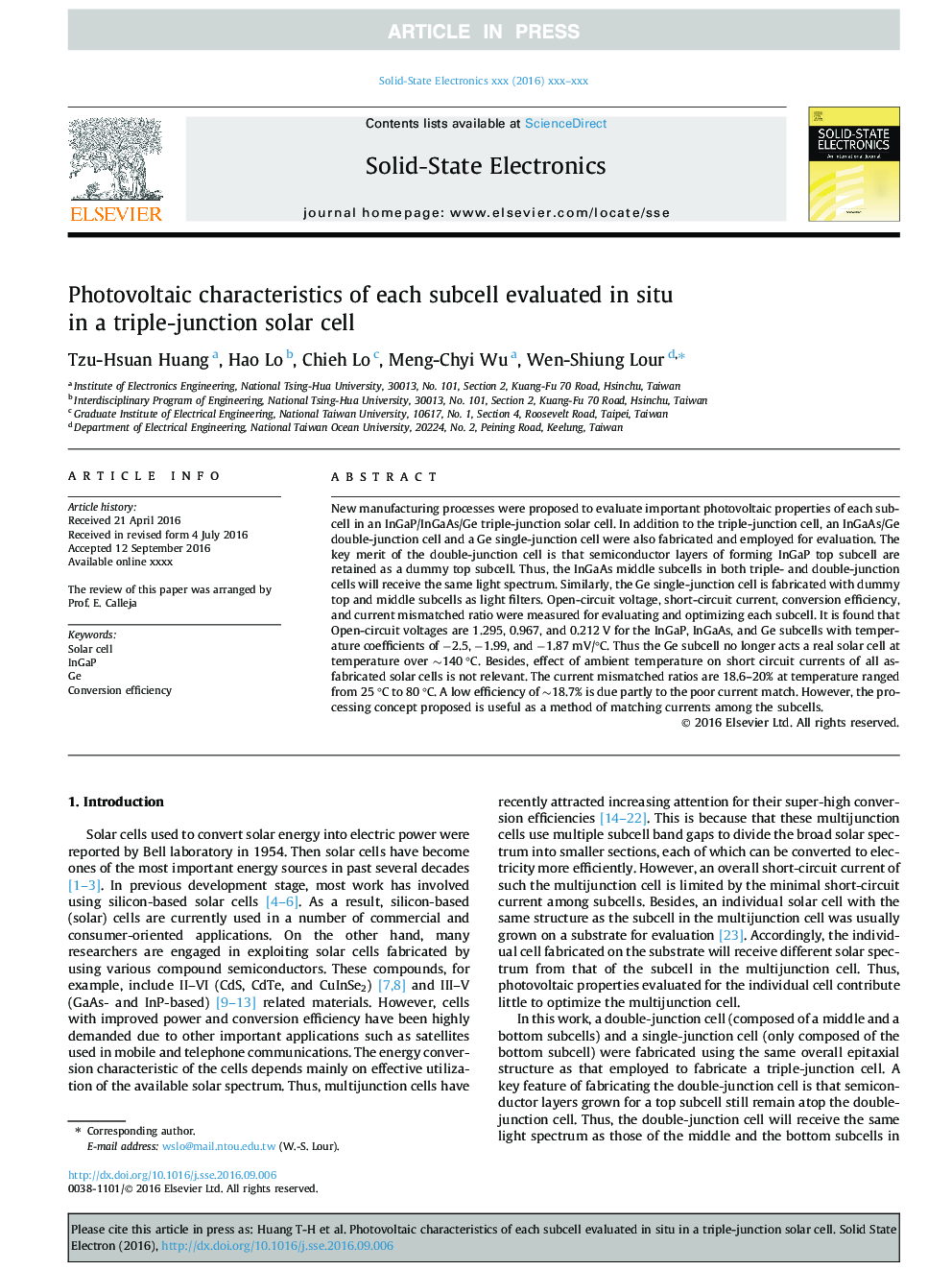| Article ID | Journal | Published Year | Pages | File Type |
|---|---|---|---|---|
| 5010418 | Solid-State Electronics | 2016 | 6 Pages |
Abstract
New manufacturing processes were proposed to evaluate important photovoltaic properties of each subcell in an InGaP/InGaAs/Ge triple-junction solar cell. In addition to the triple-junction cell, an InGaAs/Ge double-junction cell and a Ge single-junction cell were also fabricated and employed for evaluation. The key merit of the double-junction cell is that semiconductor layers of forming InGaP top subcell are retained as a dummy top subcell. Thus, the InGaAs middle subcells in both triple- and double-junction cells will receive the same light spectrum. Similarly, the Ge single-junction cell is fabricated with dummy top and middle subcells as light filters. Open-circuit voltage, short-circuit current, conversion efficiency, and current mismatched ratio were measured for evaluating and optimizing each subcell. It is found that Open-circuit voltages are 1.295, 0.967, and 0.212 V for the InGaP, InGaAs, and Ge subcells with temperature coefficients of â2.5, â1.99, and â1.87 mV/°C. Thus the Ge subcell no longer acts a real solar cell at temperature over â¼140 °C. Besides, effect of ambient temperature on short circuit currents of all as-fabricated solar cells is not relevant. The current mismatched ratios are 18.6-20% at temperature ranged from 25 °C to 80 °C. A low efficiency of â¼18.7% is due partly to the poor current match. However, the processing concept proposed is useful as a method of matching currents among the subcells.
Keywords
Related Topics
Physical Sciences and Engineering
Engineering
Electrical and Electronic Engineering
Authors
Tzu-Hsuan Huang, Hao Lo, Chieh Lo, Meng-Chyi Wu, Wen-Shiung Lour,
